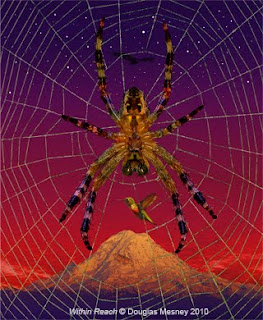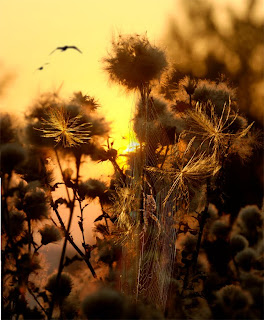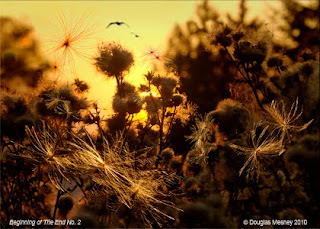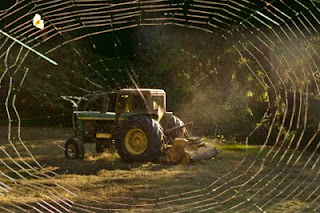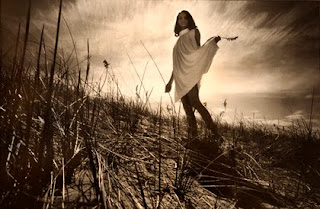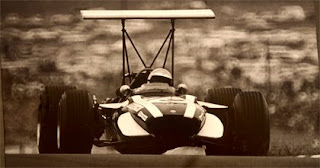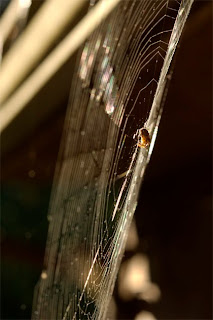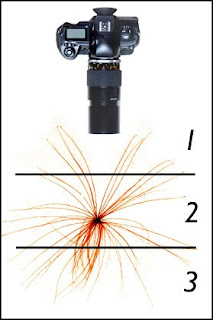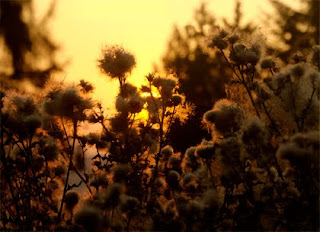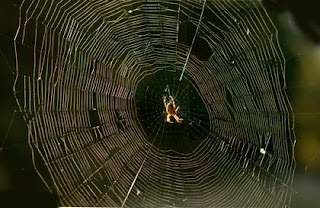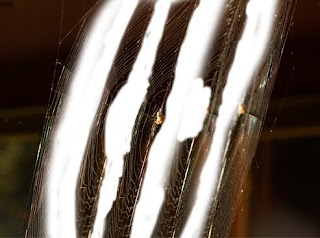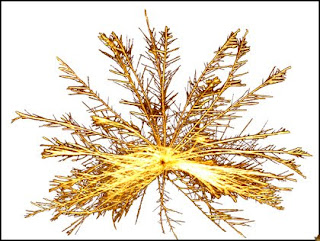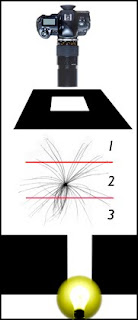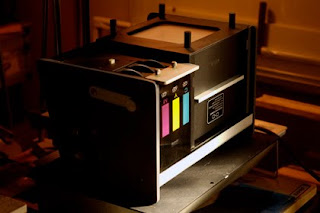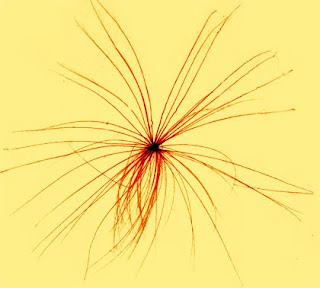Here at Vashon Island Imaging we're scurrying to get our 2011 calendars ready in time for the semi-annual Vashon Island Art Studio Tour which is coming up in a few weeks. (That's why it's been quiet on this blog for the last week or so.)
Calendars are something I've made many times before. Some notable examples are a decade calendar made for DHL® in 1989 and the Scania® millennium calendar produced in 1999 (both below).
 1990 DHL® calendar design featured big bold pictures. Text was used as a design element and followed no strict style. The shots were made in a marathon two-week around-the-world shoot for the calendar as well as a 30-projector show we were producing for the launch of DHL's Brussels hub. Top row shows front and back covers. Second row shows three of my favorite shots... all done before PhotoShop®.
1990 DHL® calendar design featured big bold pictures. Text was used as a design element and followed no strict style. The shots were made in a marathon two-week around-the-world shoot for the calendar as well as a 30-projector show we were producing for the launch of DHL's Brussels hub. Top row shows front and back covers. Second row shows three of my favorite shots... all done before PhotoShop®. The 2000 calendar produced for Scania® (Sweden) followed a strict traditional format used by the company for many years. The template presents important information in multiple languages as the calendar is distributed around the world. The illustrations were put together from shots taken on a 2-month shoot of Scania® products and people in 22 European countries. Each illustration presents four pictures that present a 'day in the life' story about a Scania® coach.
The 2000 calendar produced for Scania® (Sweden) followed a strict traditional format used by the company for many years. The template presents important information in multiple languages as the calendar is distributed around the world. The illustrations were put together from shots taken on a 2-month shoot of Scania® products and people in 22 European countries. Each illustration presents four pictures that present a 'day in the life' story about a Scania® coach. Back at the turn of the century digital imaging was still new. People never heard of 'giclée' because the term didn't exist. The first good Epson® printers were just then coming onto the market, known simply as 'ink jet' machines. They opened the door to desktop photo printing.
By the time the Epson® 2200 came onto the market image quality was plenty good for the average photographer. Thus began the flood of 'Epson prints' that has yet to end.
Like so many others I saw the potentials for making sensational customized portfolios and stunning direct mail pieces. I made 50 copies of a panoramic calendar in 2003 as a special gift portfolio of current illustrations (below):
 Inside cover (top) and two months of the Incredible Images 2003 commemorative calendar. Incredible Images LLC is my audiovisual art production company (learn more at www.incredibleimages.com). The calendar was produced to celebrate 30 years of audiovisual content creation.
Inside cover (top) and two months of the Incredible Images 2003 commemorative calendar. Incredible Images LLC is my audiovisual art production company (learn more at www.incredibleimages.com). The calendar was produced to celebrate 30 years of audiovisual content creation.Producing the 2003 Incredible Images calendar was so labor intensive that I backed off calendars totally... until now. What changed? ...The nature of life, among other things, especially in the US of A.
Recall that 2003 was four years before the bubble burst. Commerce in the USA, Canada and the rest of the world was on a roll. Why make calendars if you can sell giant giclée murals?
Times change. Now I hear that some companies are pulling their call centers back to the USA from India and China... because they can get a better price here now. That is something I can understand, being an artist and the owner of business providing artists' services.
Artists are bellwethers of the economy, as I have written about before. They are the cores of our giclée customer base. Earlier this year I wrote how an up tick in our business seemed to belie what the pundits were saying. That was before I listened to Ed Griffin and learned how the whole thing works (see my blog on that and his book The Creature from Jekyll Island)... that the pundits are worth listening to because they are indeed harbingers of the future... 'Spokespeople' for the powers that be.
People are scared again, their fear whipped up by the added uncertainties presented by an upcoming election. So I guess we shouldn't take it personally but we have plenty of 'capacity' here at Vashon Island Imaging. That's never been a problem because I am my own best customer. Whenever we aren't printing for others, I have the whole place to make my own projects... Spinning Calendars, in this case. But how these fun new calendars came to be is a story in itself.
A couple of months ago someone came to me with an idea for a calendar about their favorite subject, Mary Jane. The conversation happened while I was taking their picture for a momento giclée featuring them holding a tray full of their bountiful harvest.

During the shoot, something clicked in my head, not just the camera. Then, while the giclée was drying another client came into the studio, saw it, and exclaimed, 'Dude, that picture would sell a million copies. College kids would love it.' Needless to say I took note of that, especially since the person saying it is a principle in a large marketing company with kids in college.
What was said confirmed my suspicion that contraband subjects appeal to people in the same way that 'gansta' stuff does. It's why people wear the Mary Jane emblem on everything from flags to T-shirts. Those folks would love an MJ calendar, eh? So the project got green-lighted.
While I was working on a new picture featuring just the tray of bounty, I got into the 'Zen' of giclée (it took some time to get right because it was shot in sections to get enough resolution for a giant sized poster). Staring at the emerging picture I suddenly saw the calendar wrapped around the circular tray, not sitting under it in the traditional calendar style. Cool, I thought, and set to work on a circular calendar.
The first thing was spending 8 hours making an elaborate basic calendar in PhotoShop®, with every day on it's own layer. The idea was to make a huge 'ribbon' 12-months wide, then wrap that around the circular tray. Executing the plan is when I discovered that there is no way to wrap a rasterized image into a circle. Boo hoo.
Undaunted, I turned to Pamela Swanson (should have done that first). Of course, she had a solution... 'Just remake it' ...in Illustrator®. So she put in another 12 hours (longer? she won't tell). Voila, a perfect circular calendar materialized. Thank you Pam (www.poetpam.com).
After the calendar ring and tray picture were brought together in PhotoShop®, the coloration for the calendar ring was worked out to harmonize with the coloration of the bountiful harvest picture. The result looked so good that it produced another epiphany, or as John Stewart calls it on the Daily Report, a 'Moment of Zen'... Produce a collection of the circular calendars. After all, some people like red and others like blue. Right?
Coloration for the calendar ring was revisited with other pictures in mind. It was adjusted so that it easily changes hue to fit harmoniously with pictures in any color range. That is, after positioning the calendar around any picture, simply adjust Hue & Saturation in PhotoShop® until you find the one you like. Then tweak it with Levels and Color Balance. The whole thing takes just a few moments and the results can be seen in miniature below and very soon in larger sizes at www.spinningcalendars.com. Huh...? Spinning calendars...?
Making Heads Spin
You'd think that just the circular format of the new calendars would be sufficient, eh? However throughout the process I was plagued with the problem of 'practicality'.
Practicality is a big deal with calendars as it turns out because that is why people buy them in the first place... they need to look up dates. Making their heads spin with unique design only goes so far if the calendar is hard for people to use. Being nearly illegible at extreme angles or upside down counts as being hard to use.
Being practical is even more important today because now people need to justify expenditures. Anything deemed unnecessary is either off most people's lists or near the bottom. People 'need' art only some of the time but they need calendars almost every day of the week.
Combine attractiveness and practicality and you have a good thing going, as any good calendar publisher will tell you. Combining good design with usefulness presents an extraordinary marketing opportunity every time.
 Is it art or is it a clock? Pascal Judet's extraordinary miniatures are a big example. She is an accomplished artist whose little decorated clocks outsell prints at the Heron's Nest arts and crafts boutique on Vashon Island. Why? Practicality and price. The purchase of a useful clock is 'justified' in the client's mind more than a work of art.
Is it art or is it a clock? Pascal Judet's extraordinary miniatures are a big example. She is an accomplished artist whose little decorated clocks outsell prints at the Heron's Nest arts and crafts boutique on Vashon Island. Why? Practicality and price. The purchase of a useful clock is 'justified' in the client's mind more than a work of art.Once that bell went off in my head the idea of Spinning Calendars was manifested. The solution for the circular calendar's legibility problem was rotation.

Rotation allows the user to place emphasis on whatever month or time of year they prefer. Neat! So I went to work on finding a rotating mechanism. Circling in on a solution lead to consideration of the selling situation, a place where my head spends a lot of time.
I always try to put myself in the customer's shoes. It’s hard to put your ego aside, but you have to. What you think is good isn't necessarily another's opinion. Besides, the world is crammed with calendars... what the world doesn't need is another one. But here we come anyway with a whole new kind because in the end it is all marketing.
Marketing is an ingredient that when combined with good design and practicality create a powerfully symbiotic effect on sales. The boost comes from catch phrases and other things that make certain products and ideas easier to remember than others. They stay in your mind and that is important because you are what you think. Anyway, that's how www.spinningcalendars.com happened.
You might say that spinning is gimmicky. I would say that you are absolutely right. Sometimes a little gimmick is a good thing, eh? Give's a product a different 'spin' (sorry, couldn't resist that pun).
Controlling the Spin
Why am I telling you this? If you read this blog you probably do this stuff yourself. If you want to duplicate our efforts and have the time to make your own circular calendar, be our guest and, if you do, my book Giclée Prepress - The Art of Giclée will be helpful.
Here's a better idea... let us make your picture(s) into Spinning Calendars. What a concept, eh? Why reinvent the wheel... use ours. The trick is to come up with pictures that look good from any angle. It will amaze you how many don't. Like watching theatre in the round, not all folks look great from behind. So it goes with pictures.
Beyond rotation all the usual 'rules' apply in terms of subject popularity and size (things I have written about in previous blogs). The top selling pictures at IKEA® are 30X50 cm (about 12 X 20 inches) and 50X70 cm (about 20 X 28 inches).
Based on those IKEA® sales figures we've come up with two calendar sizes: 15-inches in diameter (38 cm) and 20 inches (50 cm). Depending on demand, we may offer additional sizes especially larger ones. There is a limit on the lower end sizes unless the user isn't concerned about reading the calendar. In my own mind the limit is a 12-inch diameter calendar (however, I wear glasses).
Spinning Calendars are limited edition giclées of illustrations by yours truly and soon others (possibly you?). We print them on Epson® Enhanced Matte art paper, mount them on 8-point art board, varnish them with Golden® Polymer Varnish, and assemble them on spinners that hang easily from a single hook.
Spinning Calendars will enter the market as individually signed artworks. But you know as well as I do how things can spin out of control. Maybe the new Spinning Calendars will go 'viral' and circulate through the Web via www.spinningcalendars.com... Fingers crossed but whatever they turn into it’s been fun giving this idea a spin.







